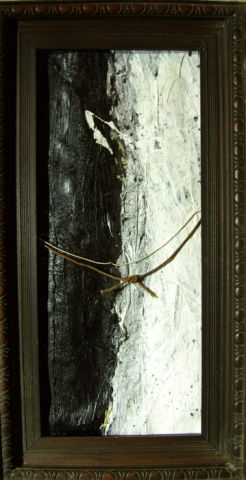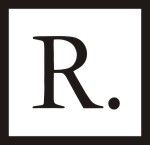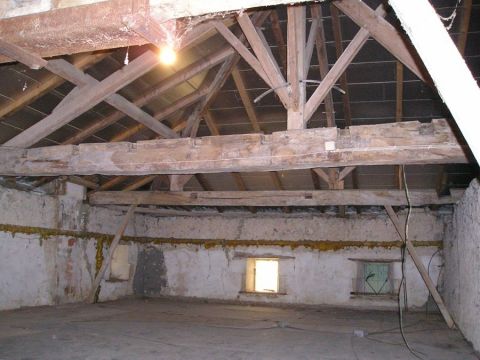This blog looks at the benefits and pitfalls of working in isolation. One significant aspect of this isolation is a rich and deepening understanding of art history. I’ll explore that relationship to my work, my practice and my efforts to bridge the gap.
Archives
I’ve always felt the artist’s ability to know when to stop an intriguing thing and one of the signals in defining an artist, although I know some artists do struggle with knowing when to stop. An artist friend back in The States told me once that he observed his child in a group of other children during a painting workshop for kids. Each child was painting a picture, he noticed his son reached a point and stopped while the other kids just kept painting until they were told to stop. He found it significant and I had to agree.
The completion of something is an important boundary; it contains the statement that anything more would be superfluous, unnecessary and an annoyance running the risk of ruining all that came before. It signals not an end but the wholeness of something.
It is with these thoughts that I have decided to stop. I have been writing this blog for a year and half or so and it is about one year ago I participated in my first group exhibition with Core Gallery which marked the beginning of a fruitful journey out of isolation, one which I’m still on I’m happy to say; a journey made possible by Artists Talking. I’ve said before and I’ll say again any success I have relates back to this blog on a-n. That journey is the very reason I’m making the decision to stop this blog. With the launch of Rebecca, I’m now entering a new phase in my artistic life, one which is no longer isolated. It is time to stop working in isolation but my dialog with history will never end.
My sincere wishes of good luck and heart-felt thanks to a-n and everyone who joined me here discussing many fascinating topics, as well as to those who read the things we talked about. I am very grateful for your engagement with my thoughts and the trust you showed me by sharing yours. As my friend and fellow artist Elizabeth Murton said recently, ‘This is, of course, not farewell, but see you soon!’
All the Best,
Jane
Art critic pair launches Rebecca – a comprehensive writing service for artists, artist-led groups, galleries, and arts organizations – with a free, Twitter advice session on 9 November at 6pm GMT / 1pm EST.
Art professionals Becky Hunter and Jane Boyer have upped the ante for independence with the creation of Rebecca, an arts writing service designed to support the independent arts practitioner. Based on their complementary skills, experience and expertise, Rebecca offers a wide range of specialist services, from press release writing and PDF layout, to essay writing, assistance with artist and curatorial statements, and consultation on business writing.
Becky explains, “As the commercial gallery world becomes ever more exclusive, proactive artists and artist-led initiatives take increasing responsibility for their own self-promotion, critical reception and career development. It makes sense to work with an experienced writer to bring polish and sparkle to your press releases, to encapsulate the creative force and vision in your business documents, and to highlight the years of hard-earned, in-depth knowledge of your practice in your catalogue essays.”
To this end, the free Twitter Q&A session offers artists, creative entrepreneurs, and arts professionals an opportunity to draw upon the Rebecca team’s know-how. Questions on all aspects of art writing, press releases and marketing strategy, artist statements, blogging, and critical essay writing will be answered. The online launch also provides a chance simply to interact with Becky and Jane, and to find out whether their skills and services are a good fit with your needs. Connect with @RebeccaProjects before and during the event using the hashtag #AskRebecca.
Becky is a regular contributor to Art Papers and Sculpture, and an independent researcher with an AHRC funded Masters in History of Art. Jane is an artist, critic, curator, and committed peripatetic, who frequently reviews exhibitions for whitehotmagazine.com. Both writers have formal Fine Art training and sustain meaningful art practices. “As working arts professionals, Becky and I understand the importance and often the complexity involved in creating texts for a professional art practice. Because we understand, we want to help,” says Jane.
Rebecca’s writers are great listeners who will collaborate with you to produce the text you envision. Elizabeth Murton, an artist and curator at Core Gallery, London, says, “Jane has an ability to help you focus ideas in the text, structuring information in a clear, readable, and engaging way. Her arts and business background gives her a unique perspective to assess the audience and impact of the writing, which compliments her knowledge and love of art.”
Rebecca: Key information
Launch Information: 9 November, 6-8pm GMT | Twittter @RebeccaProjects #AskRebecca
Web: http://rebeccaprojects.net | Email: [email protected]
Phone: Becky +1 215-317-0907 | Jane +33 546704225
Services: Press releases, catalogue essays, artist & curatorial statements, business writing, editing
The move from hell is finished.
It took two months to organize and prepare, 18 full trailer-load trips to the tip, countless carloads back and forth between the two houses moving small stuff, a week of cleaning which in the end wasn’t finished and three panel truck loads to move our furniture.
My back suffered, our car broke down during the last and most crucial push, which meant two, four hour round trips to Angouleme to the car dealership when we could least afford the time. And we thought our eighteen year old cat was going to die during the process. To say we were stressed would be an understatement.
Happily, the cat is happy as Larry, the car is running better than ever and we are sitting atop a pile of stuff thinking we should become brocanteurs; all it would take would be a new sign with open for business hours. Our belongings are stored in ‘Bay 1’ and ‘Bay 2’ of our downstairs and it looks just like a depot vente with all the white appliances on one side, furniture piled high and bric-brac down the back. I think we won’t go there.
I’m very ready to get back to work.
Speaking of work, the trip to London in September was fab! It was a very rushed trip but the Core Gallery Open which I co-curated with Ros Davis was a big success – I think it was the largest PV crowd we’ve had. The Artist Talking blog workshop was a success too with near full capacity. It really was wonderful to meet everyone. It gives me such encouragement and validation to discover people are responding positively to the things I do; it really is such a boost and a reminder that isolation is transient.
Even though as I write this, I’m still without internet, I have been working on several other projects and the clean-up has started in my new studio, hopefully I’ll be painting again soon; it has been a long fallow summer. In this fallowness and on my husband’s suggestion that I draw more, I’m taking part in the Art House Coop Sketchbook Project. It is a really great idea; this is the second year of the project. It is in conjunction with the Brooklyn Art Museum Library and all the sketchbooks returned by the deadline go on a world tour then become part of the permanent collection. It costs $25 to participate and an extra $20 to digitize your sketchbook. Each artist selects a title topic from a list of topics provided by Art House, such as ‘Encyclopedia of’, they send you a sketchbook and you’re off from there. The title of my sketchbook is ‘The Encyclopedia of Wherewithall’. To find out more go to: www.thesketchbookproject.com the deadline for sign up is 31st October 2011.
Now I just have to find the teapot and remember where I put the tea…..
It really is remarkable when things converge.
‘Image-breaking retained the sense that each element retained its own vivid specificity but took a step a back from the final lightning strike of illumination which would hold them all together in understanding. Image-breaking was the perpetual delay of illumination: intelligibility was held in abeyance through the unresolved relationship of parts to wholes. It is the lack of transcendence, the permanent uncertainty of any resolution, which propels New Brutalism back into the world as a form of ethical realism.’[1]
This has been circulating in my mind for weeks as I carry on with the rest of the madness on my plate at the moment.
I found this definition came to the forefront of my thoughts as I considered the work chosen for The Core Gallery Open which I will be co-curating with Ros Davis in ten days. Without giving too much away (you’ll have to come see the show!), new painting in the UK is right on target with this quote. Here is a link for more information on the show: http://www.coregallery.co.uk/current-exhibition/
As I continued to sort through my studio yesterday (each day of sorting propels our move forward and is the reason for my madness at the moment) I uncovered the box pictured here. It is an ‘as found’ piece which is another connection to New Brutalism and Paolozzi in particular. It moves me, (sorry, no pun intended) and as I consider whether I should interact with this box, changing or altering it, my inner voice screams ‘NO!’ So I claim it as it is, something unusual for me in my work.
Earlier today I read a really great interview with Moby by Kyra Kordoski[2] in Whitehot Magazine, and this quote struck me: “What can you take a picture of that no one else will see?” This is something Moby’s photographer uncle taught him about photography and which resonated with me because of my background in photography. It was a fresh active memory when I saw this box again today in the studio. This photographic quote conflates poignantly in my mind with the image-breaking quote to become a notion of ‘what do I see that no one else will?’ This is not to suggest others would not have the capacity to see what I see, but rather it highlights the fact that we each are absolutely separated from each other’s thoughts, we are isolated with our own interior workings. We empathize, understand, communicate and sometimes hate but we never cross that threshold of absolute awareness of another’s interior thoughts. At best we guess. I see this ‘guess’ as what they were circling around with New Brutalism. This ‘guess’ underlies all of our attempts to communicate and is the reason, I believe, we use symbols to convey meaning in language – all language.
This is one of those things I’ve known all my life, one of those things which founds my worldview, but something which only struck like lightning today because of a particular convergence of ideas at a particular time. It’s one of those things that make me feel the electricity of living.
……………..
I’ll also be part of a panel discussion on blogging presented by Andrew Bryant on 22nd September at Core Gallery. In preparing for this, Andrew has made me aware of how my engagement with reading informs my work. This awareness is also in the mix. He said, ‘You seem to use the space to work over, rehearse and pull together the various texts you are engaged in as part of your visual practice. In this sense your blog is much closer to the academic/professional model of the contemporary artist, whereby your practice is ‘informed’ by your reading. Because of this your blog is the way in to a deeper, more complex understanding of your practice.’
Thank you Andrew, I’m really looking forward to the first Artist Talking event. Here is a link for more information: http://www.coregallery.co.uk/diy-educate/ , there are still spaces available if you would like to hear more.
[1] Ben Highmore, “Image-breaking, God-making’: Paolozzi’s Brutalism”, October 136, Spring 2011, MIT Press, p.99
[2] Kyra Kordoski, “DESTROYED: Moby the Whitehot Interview”, Whitehot, September 2011, found at: http://whitehotmagazine.com/articles/2011-destroyed-moby-whitehot-interview/2364







